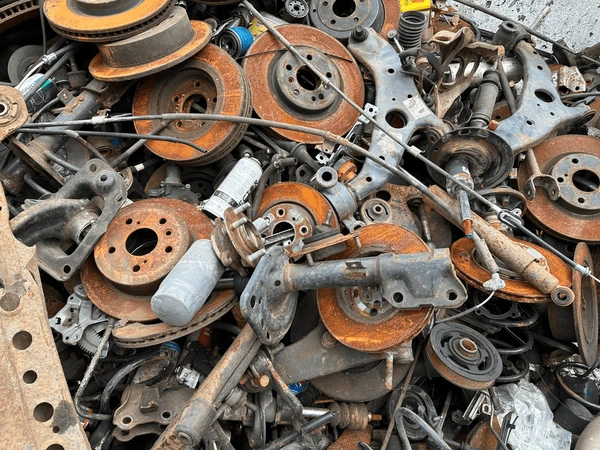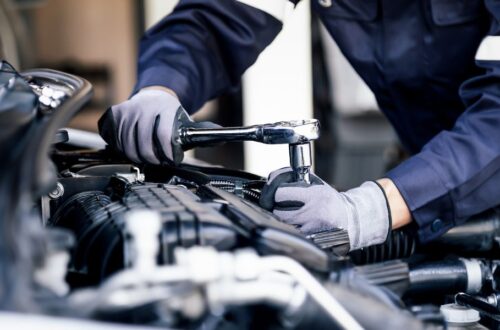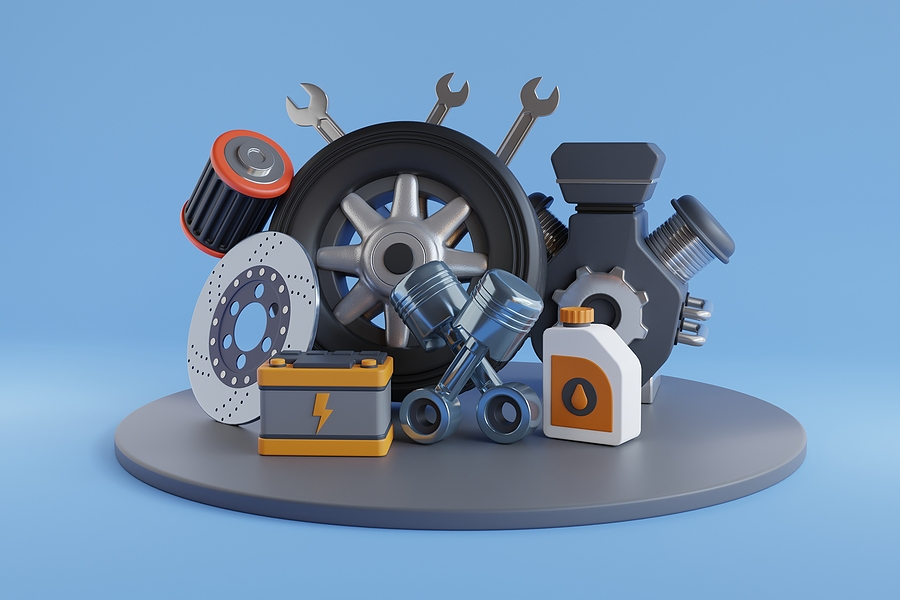Emergencies on the road can happen at any time, and being prepared with the right auto parts can make a world of difference. Whether you’re facing a flat tire, a dead battery, or unexpected engine trouble, having essential auto parts in your car can help you stay safe and get back on the road quickly. In this article, we’ll discuss the key auto parts every driver should keep in their vehicle to be prepared for emergencies.

- Spare Tire and Jack Kit
One of the most common roadside emergencies is a flat tire. A spare tire, along with a jack and lug wrench, is essential for getting back on the road quickly. Make sure your spare tire is properly inflated and check it regularly to ensure it’s in good condition. A tire inflator or sealant can also be useful for temporary fixes until you can reach a repair shop.
- Jumper Cables or Portable Jump Starter
A dead battery can leave you stranded, especially if you’re in a remote area or it’s late at night. Jumper cables allow you to start your car by connecting it to another vehicle’s battery. If you’re alone, a portable jump starter is a lifesaver, as it allows you to jump-start your car without needing another vehicle. Make sure to keep these items in your trunk and learn how to use them properly.
- Multi-Tool or Basic Tool Kit
Having a multi-tool or a basic tool kit in your car can help you address minor mechanical issues on the spot. Whether it’s tightening a loose battery terminal, fixing a small leak, or adjusting a part, having tools like pliers, screwdrivers, and wrenches can be invaluable. A multi-tool with a knife, scissors, and other functions can also be useful in various situations.
- Engine Oil and Coolant
Running low on engine oil or coolant can cause serious damage to your vehicle’s engine. Keeping a quart of engine oil and a bottle of coolant in your car can help you maintain proper fluid levels and prevent overheating. Regularly check your oil and coolant levels, and top them off if necessary. In an emergency, these fluids can help you reach the nearest service station without causing further damage to your vehicle.
- Emergency Flares or Reflective Triangles
If your car breaks down at night or in low-visibility conditions, it’s crucial to make your vehicle visible to other drivers. Emergency flares or reflective triangles can be placed around your car to warn oncoming traffic of your presence. These items are particularly important if you’re stranded on the side of a busy road or in a dangerous area. Always set them up a safe distance away from your car to give other drivers ample warning.
- Duct Tape and Zip Ties
Duct tape and zip ties are versatile items that can temporarily fix a wide range of issues. Whether it’s securing a loose part, patching a small hose leak, or holding something in place, these items can help you make quick repairs until you can get to a mechanic. They’re small, lightweight, and easy to store in your car, making them essential items for any emergency kit.
- Windshield Washer Fluid
Driving with a dirty windshield can be dangerous, especially in bad weather. Keeping an extra bottle of windshield washer fluid in your car ensures you can maintain clear visibility in rain, snow, or dusty conditions. In a pinch, water can be used temporarily, but windshield washer fluid is designed to effectively remove grime and prevent freezing in cold temperatures.
- Flashlight and Extra Batteries
A flashlight is an essential tool for any roadside emergency, especially if you need to work on your car in the dark. Choose a durable, waterproof flashlight with a strong beam, and keep extra batteries on hand. A headlamp can also be useful, as it allows you to work hands-free while illuminating your surroundings.
- First Aid Kit
While not an auto part, a first aid kit is an essential item to have in your car. In the event of an accident or minor injury, a well-stocked first aid kit can provide necessary medical supplies until help arrives. Include bandages, antiseptic wipes, pain relievers, and any personal medications you may need.
- Owner’s Manual
Your vehicle’s owner’s manual is a valuable resource that provides information on your car’s specific parts and systems. It can help you troubleshoot issues, find the location of certain parts, and guide you through minor repairs. Keep it in your glove compartment for easy access whenever you need it.






